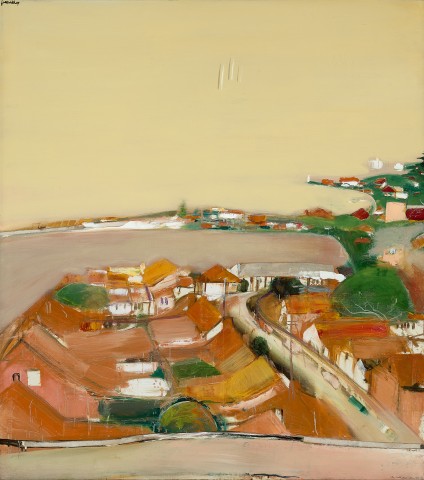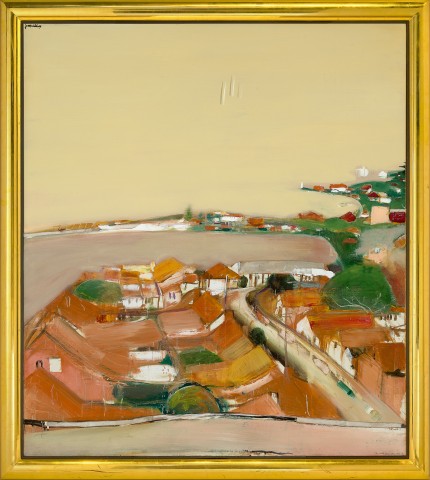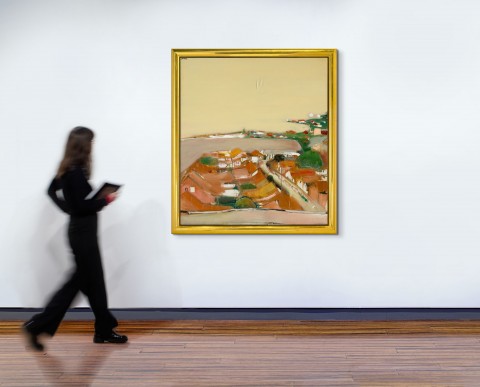SOUTH COAST AFTER THE RAIN, 1984
BRETT WHITELEY
oil and collage on canvas (with white oil on Perspex surface)
137.0 x 122.0 cm
signed upper left: brett whiteley
dated and inscribed with title lower right: ‘the south coast’ June 1984
signed, dated and inscribed with title on artist's handwritten label verso: "THE SOUTH COAST AFTER RAIN" 1984 / 54" x 48" / oil + collage on canvas + BRETT WHITELEY / 8 REIBY PLACE / CIRCULAR QUAY
Robin Gibson Gallery, Sydney
Joan Clemenger AO and Peter Clemenger AO, Melbourne, acquired from the above in March 1985
Wynne Prize, Art Gallery of New South Wales, Sydney, 15 December 1984 – 25 January 1985, cat. 84 [awarded Wynne Prize in 1984]
Brett Whiteley: Art & Life, Art Gallery of New South Wales, Sydney, 16 September – 19 November 1995, touring exhibition to Darwin, Perth, Adelaide, Melbourne and Hobart, until 17 November 1996, cat. 100 (label attached verso)
Pearce, B., Brett Whiteley: Art and Life, Art Gallery of New South Wales, Sydney, 1995, pl. 104 (illus.), p. 232
Hilton, M., and Blundell, G., Whiteley: an unauthorised life, Pan Macmillan, Sydney, 1996, p. 188
Hawley, J., ‘Brett Whiteley: The Art of the Warrior’, Sydney Morning Herald Magazine, Sydney and The Age, Good Weekend, Melbourne, 17 February 1990, p. 26
Sutherland, K., Brett Whiteley: Catalogue Raisonné, Schwartz Publishing, Melbourne, 2020, cat. 160.84, vol. 4, p. 272 (illus.), vol. 7, p. 640
Study for ‘The Great Australian Landscape’, 1989 – 90, oil on canvas, 76.0 x 76.0 cm, private collection, Perth
Byron Bay at Sunset, retitled South Coast Geographical, 1990 – 91, oil on canvas, 96.0 x 86.0 cm, private collection
220611 Brett Whiteley FA.jpg
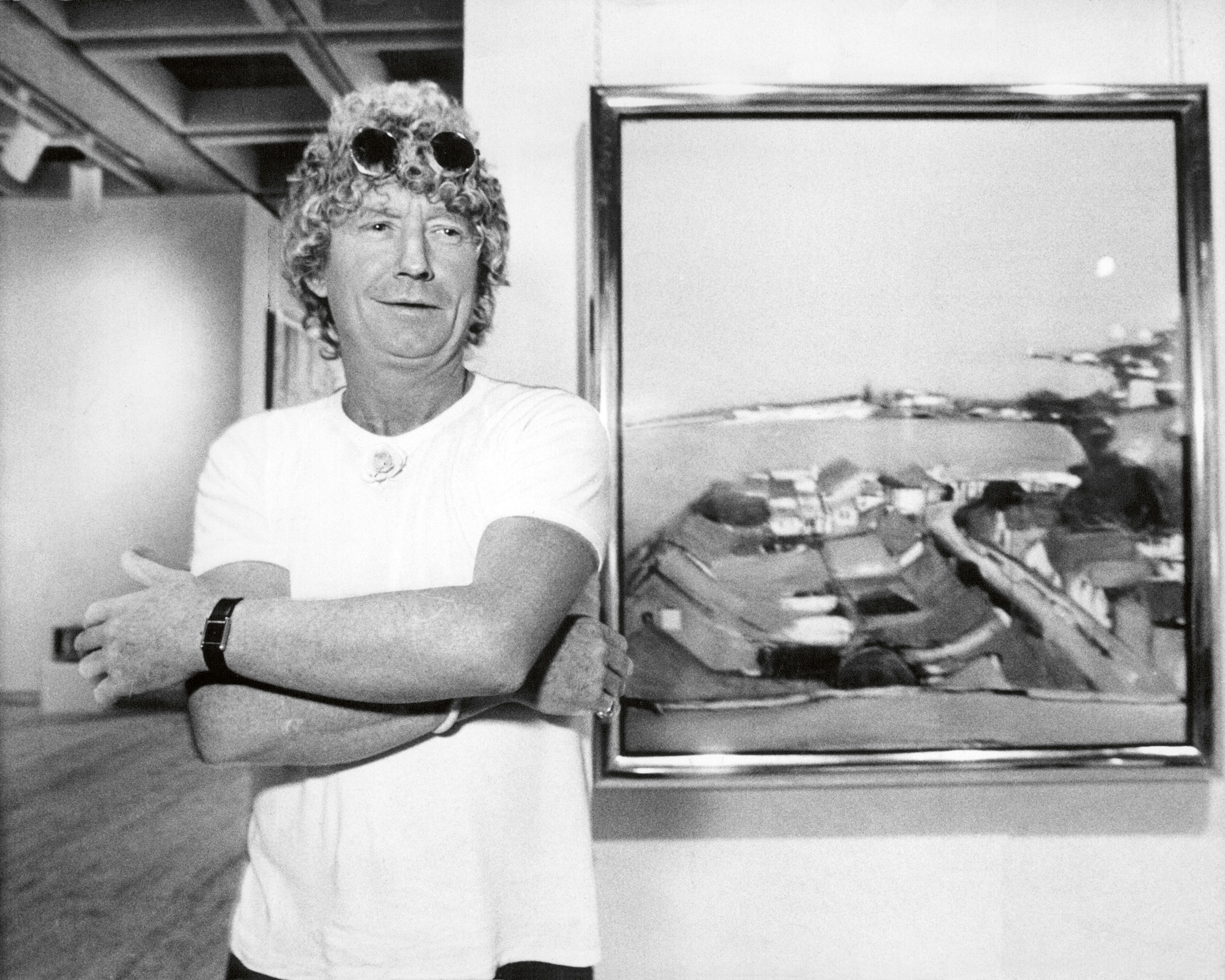
From his auspicious start as the youngest non-British artist ever to have a work acquired by London’s prestigious Tate Gallery1, Brett Whiteley’s artistic trajectory was nothing short of astounding. Hosting his first solo exhibition at Matthiesen Gallery, London in 1962 at the age of 22, the fiery, tousle-haired wunderkind quickly made a name for himself internationally as an urgent, flamboyantly talented artist. After launching himself on New York for a brief period of turbulence, Whiteley subsequently returned, upon the expiration of his American dream, to Sydney in late 1969 where, seduced by the enchanting siren of the city’s harbour, he would embark upon the sumptuous Lavender Bay tableaux universally considered to be the crowning achievement of his career. Significantly, within the decade he had won all three of Australia’s most coveted art awards – both the Archibald Prize for portraiture and Sulman Prize for genre painting in 1976; the Wynne Prize for landscape in 1977; and all three prizes again in 1978 (the only artist ever to be so honoured in the same year).
By the early eighties when the magnificent South Coast after the Rain, 1984 was unveiled at the Art Gallery of New South Wales and awarded the artist’s third Wynne Prize, Whiteley’s fame was at its peak. Yet lurking below such myriad accolades and the ostensible serenity of his art during this period was an increasingly torturous struggle with addiction – a self-destructive legacy borne from a visceral need to ‘test his gift’ that had now become inextricably intertwined with his prodigious creative efforts. Their marriage also flailing, in mid-1984 Brett and Wendy thus departed for England, determined to liberate themselves from the thrall of substance abuse. As the world now knows, after further attempts, Wendy would eventually survive, totally cleansed. For Brett however, it was too late and despite his best efforts over the intervening years, addiction would ultimately consume him, leading to his lonely death in a motel room at Thirroul on the south coast of New South Wales in 1992.2
Which makes all the more remarkable the lyrical calm of this exquisite painting of a seaside village and shoreline beneath a velvety grey sky, created following Brett’s return to Australia from England in 1984. Bereft of angst or any trace of the psychologically grueling challenges plaguing his life at the time, indeed the work exudes a quietude that perhaps reflects the brief success of his treatment abroad. More importantly, in a departure from the preceding complex panoramas that focused upon America, Australia and his own richly narcissistic ego, or his more recent suite of images inspired by Van Gogh in 1983 whose crudity raised the ire of critics, in South Coast after the Rain Whiteley showed that he was, underneath all the noise, a superb master of nuance and poise when he so chose.
dh220611 (sup iamge) cmyk.jpg
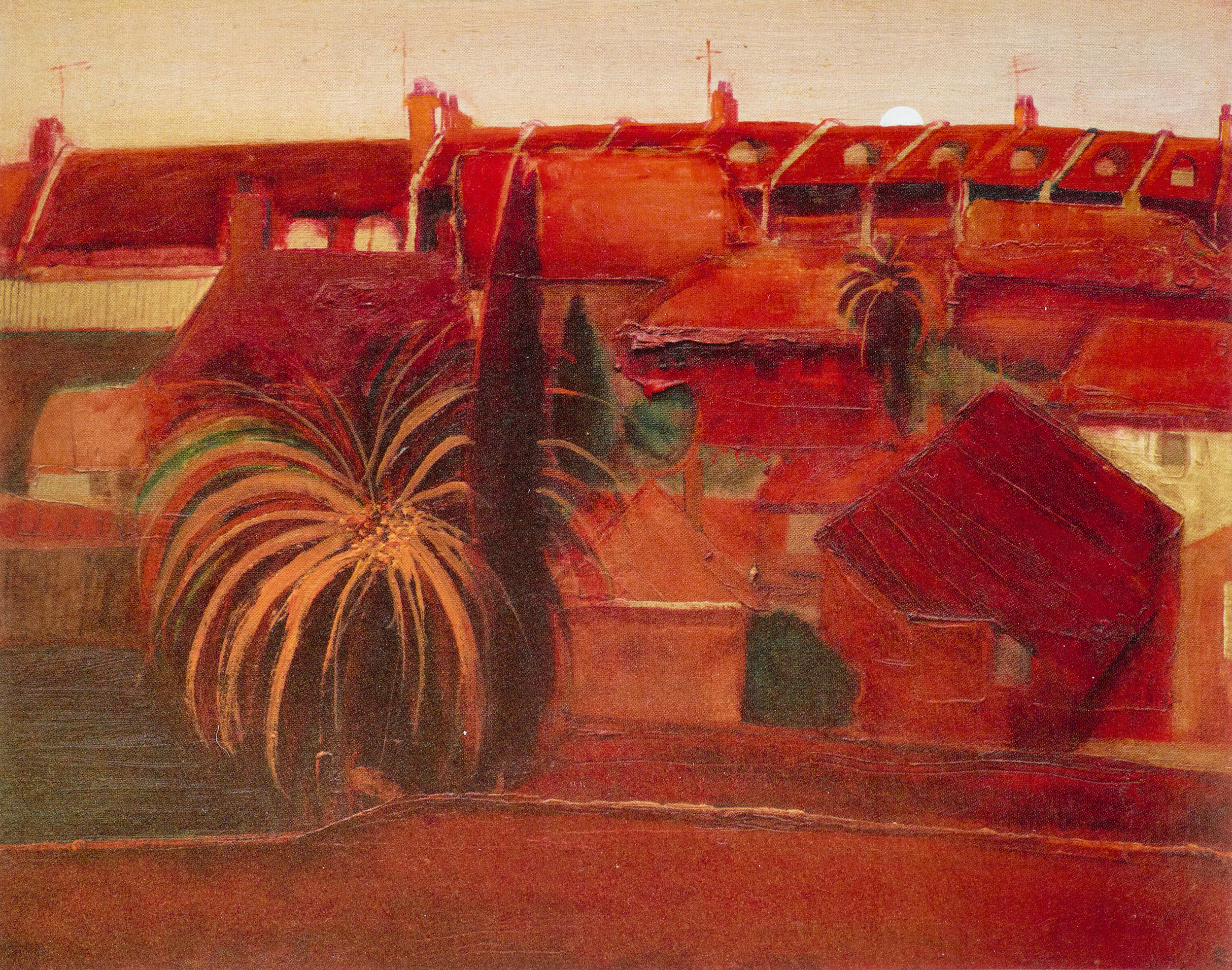
We may sense, moreover, in this subtle masterpiece Whiteley’s love of Charles Baudelaire, the great French poet and critic, staring at a flat, boundless space of ocean beyond the ruck of humanity and its little, red-roofed houses below. Baudelaire had once recalled a childhood when his parents, hoping to rein in his wildness, sent him on an ill-conceived sea voyage, instigating the bitter-sweet phrase:
Quand partons-nous pour le bonheur?
When shall we set sail for happiness? 3
Indeed, it was as if Whiteley channeled Baudelaire to address his own passionate, angry longing, impelled to seek balm beyond the tangled inlets of Longueville after his mother deserted the family to migrate to England in 1956. This he did, three years later, tracking her across oceans and striking gold abroad with the acclaim of a pop star.
When Brett and Wendy returned to Sydney in 1969 after a decade of phenomenal success, he immersed himself in a state of ecstasy at the sublime expanses of Lavender Bay, where they settled, with paintings of exquisite, Matisse-like scale and mood, that were precursors to South Coast after the Rain. These chimed with the end of Arthur Rimbaud’s poem Le Bateau Ivre, a poignant reminder – notwithstanding the poet’s theory of dérèglement and Baudelaire’s exhortation of drunkenness – that innocence might have been the ultimate resistance to self-immolation if only it was possible to bottle it:
If there is one water in Europe I want, it is the
Black cold pool where into the scented twilight
A child squatting full of sadness launches
A boat as fragile as a butterfly in May 4
To be sure however, those wonderfully eloquent Lavender Bay images also became mirrors of danger masked by sheer visual poetry, aided and abetted by a state of addiction, albeit cleverly bolstered by sections of shoreline, high horizons, window frames and balconies marshalling astute deployments of arabesque. And they counterpointed perfectly the sea and beach motifs Brett happily found along the coasts of New South Wales.
Whiteley’s geographical reach was astonishing, well beyond Sydney. Which raises the question of exactly where South Coast after the Rain was inspired and how it fitted within the artist’s ultimate intention to accumulate a vast collective image of Australia across the entire continent. It has been suggested that this particular composition was probably seen by the artist from the balcony of an apartment block on Kennedy’s Hill near Austinmer, looking across Thirroul towards Sandon Point headland with Wollongong lighthouse in the distance – the region where for many years he had escaped from city angsts, relaxed, swam, and detoxed in solitude. Very close, in other words, to where his life was to end.5
dh220611 (sup image) 2 cmyk.jpg
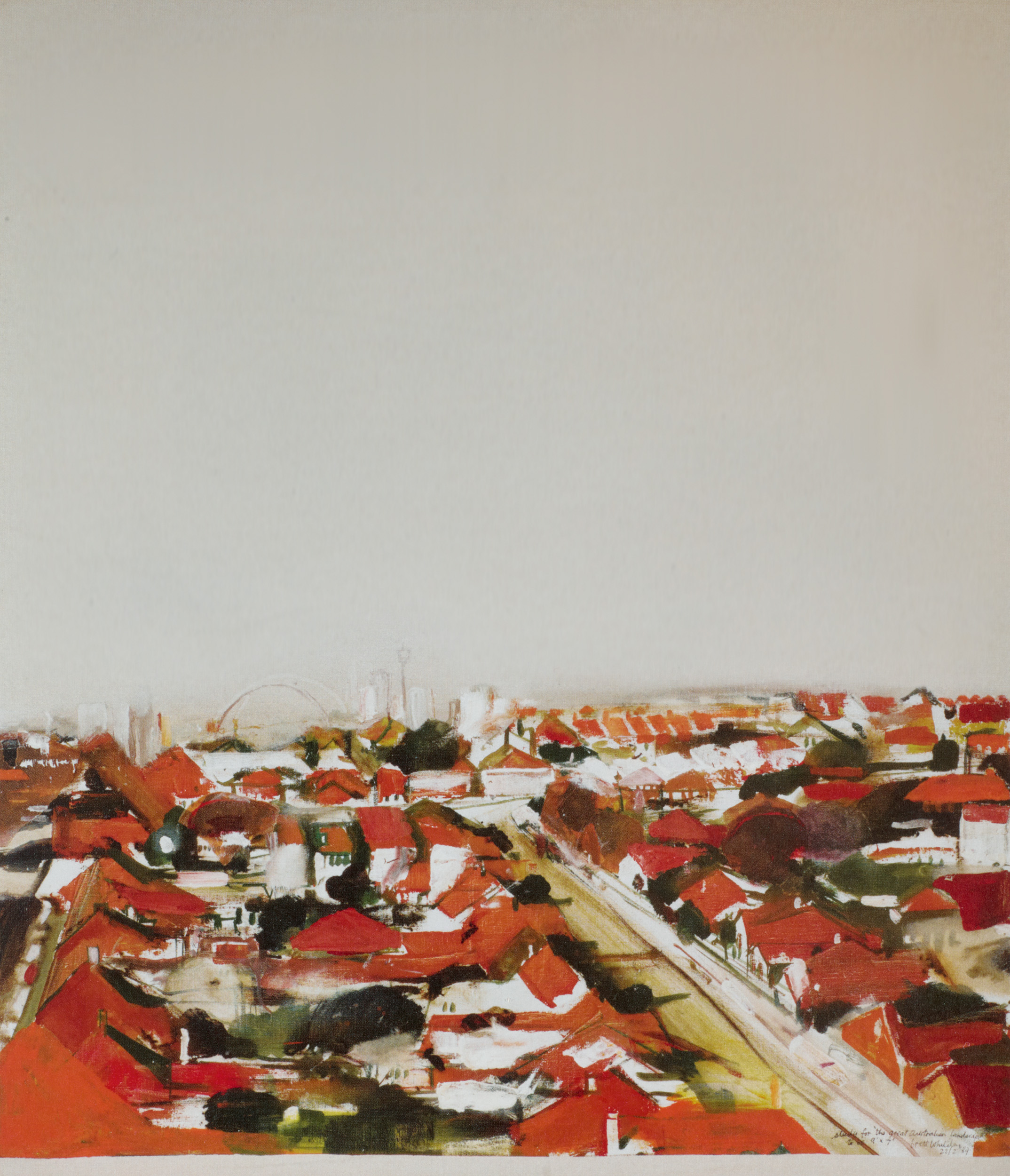
In her definitive catalogue raisonné, Kathie Sutherland avoids the problematic challenge of identifying exact locations with Whiteley’s landscapes, placing this painting within a broader context whereby topography was often turned on its head by the artist’s imaginative interventions. In other words, the motifs were nearly always departure points, like music being separated from the libretto:
‘…Suburbia is another important component in the development of the theme on The Great Australian Landscape. The Suburbs, a large oil and a key work included in the 1970 exhibition [Bonython Art Gallery, Sydney, thence Australian Galleries, Melbourne], was repainted in 1982… It depicts an ordinary suburban house – a red tiled roof set behind a real paling fence – looking out to a landscape dotted with more red-roofed bungalows and suburban vegetation. This idea continues to evolve over several decades, with variations on a theme that include Red roofs with Palm Trees (1983)… South Coast after the Rain (1984)… and Study for The Great Australian Landscape (c.1989)… Common to each painting is a palette dominated by reds, oranges and greens that describes the profile of the typical sprawling Australian urban landscape.’6
Whiteley himself spoke succinctly of his Great Australian Landscape project during the last two years of his life, expanding the concept way beyond the original idea of ten panels, as he declared in an interview with Andrew Olle in 1991: ‘…50 panels from Bondi to Uluru… through the blue suburbs, the red roofs, the city, the Blue Mountains, the bush, the outback and right through the red heart… 50 panels… to refer to the full political, historical and cultural levels of Australia.’7 Furthermore, Ashleigh Wilson’s biography of 2016 records a comment by Whiteley about the overwhelming energy required to bring this project to fruition, and a fatalistic statement that if he was given only four years left to live, he would have to drop everything to get it done.8
There had been a creative high in 1989, travelling to Paris with his girlfriend Janice Spencer, but when they returned to Sydney Brett was faced with the trauma of settling divorce with Wendy. Soon after, his relationship with Spencer began to disintegrate too and he felt his life ebbing towards a loneliness underscored by inability to stop using heroin. The end was nigh: ‘…the self-destructive side of me that wants to die… I have arrived at a point in my life where unless I revise, unless I mature, unless I shape up, unless I look at my character defects, unless I get a sobriety, I will spin out…’9
220611.1 cmyk.jpg
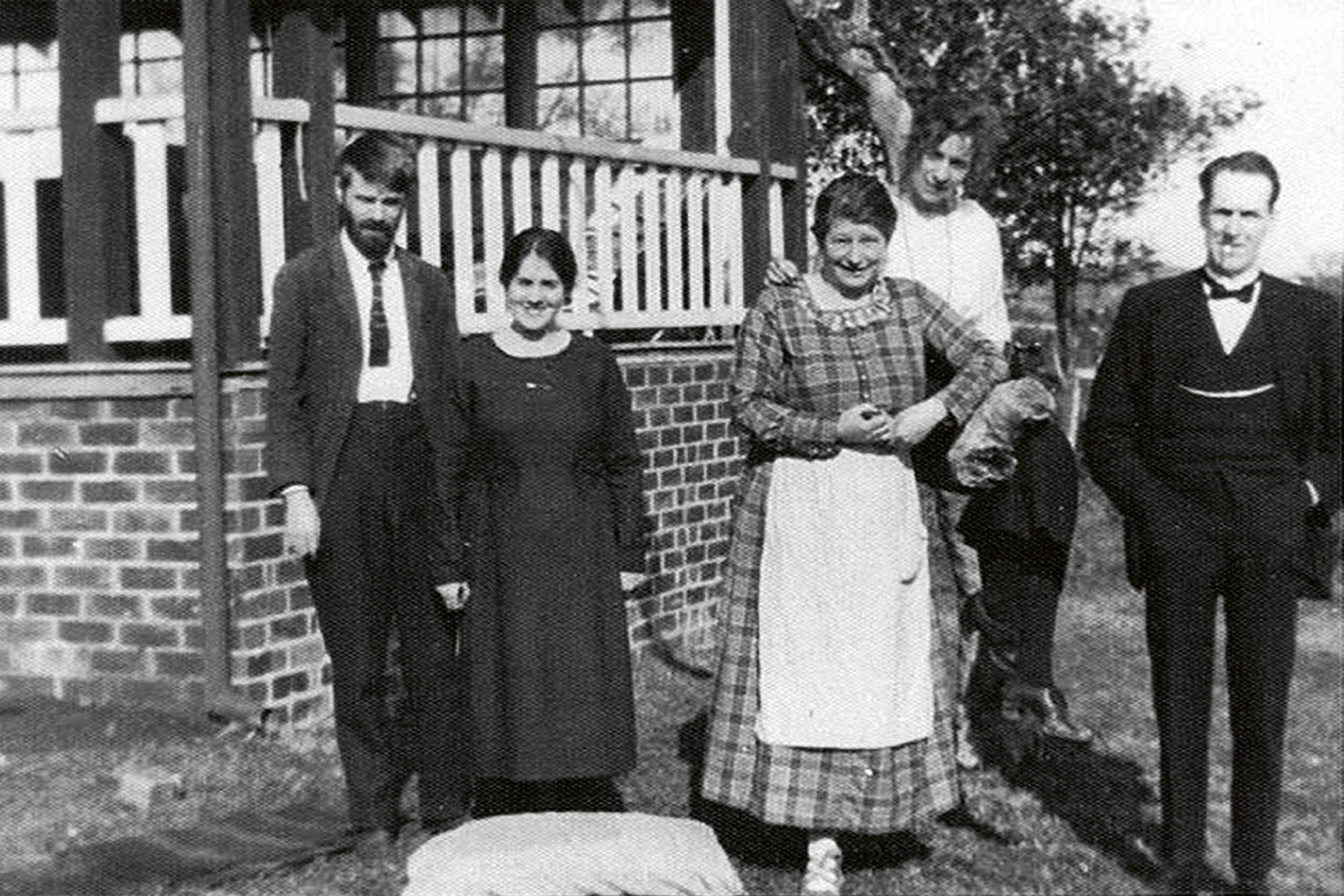
British migrants they had met on the voyage out, (from left)
Laura Forrester, Mrs Marchbanks and Mr Marchbanks, at “Wyewurk”
in Thirroul, New South Wales, 1922
With its characteristic verve, sensuous colour and irreverent wit, South Coast after the Rain offers a consummate example of the singular vision for which Whiteley remains so highly acclaimed. In the centre of the sky, floating on perspex above the canvas, are three small farewell streaks left by the retreating rain – a witty gesture by the artist signifying subtle denial of a binding rule of bonne peinture. He breaks the rule, but with Maurice Denis standing at his shoulder, he challenges us to realise that beneath those floating marks there is not an illusion of deep space but a painting with the full integrity of flatness.
The real music of this painting, however, remains the swathe of red and orange rooftops at the base of the composition, reflected in small flecks on the distant headlands. It is not easy to know how extensive such roofs were in the 1980s since Thirroul, once a thriving mining town with a local brick kiln, was soon to undergo dramatic change with demolition of miners’ cottages and tiled roofs as developers moved in to accommodate a new era of tourists and holiday apartments.10
What we do know for sure though is that Whiteley had already fallen in love with red roofs a decade earlier when he and Garry Shead absorbed themselves to obsession with D. H. Lawrence who had stayed several weeks in Thirroul, where he wrote his iconic novel Kangaroo in 1922. In that book, Lawrence refers to the red roofs of Sydney Harbour appearing like a ‘burgeoning infection’.11 Notably, several of Whiteley’s paintings over his final decades bear witness to this obsession, including two predecessors to South Coast after the Rain: Sketch for the Red and Green of the Suburbs which resembles a construct by Nicolas de Stael, and the highly minimalist Bondi, with its flat patches of red architectural shapes juxtaposed against an unmodulated field of celadon grey.
220611 Final image_cmyk.jpg
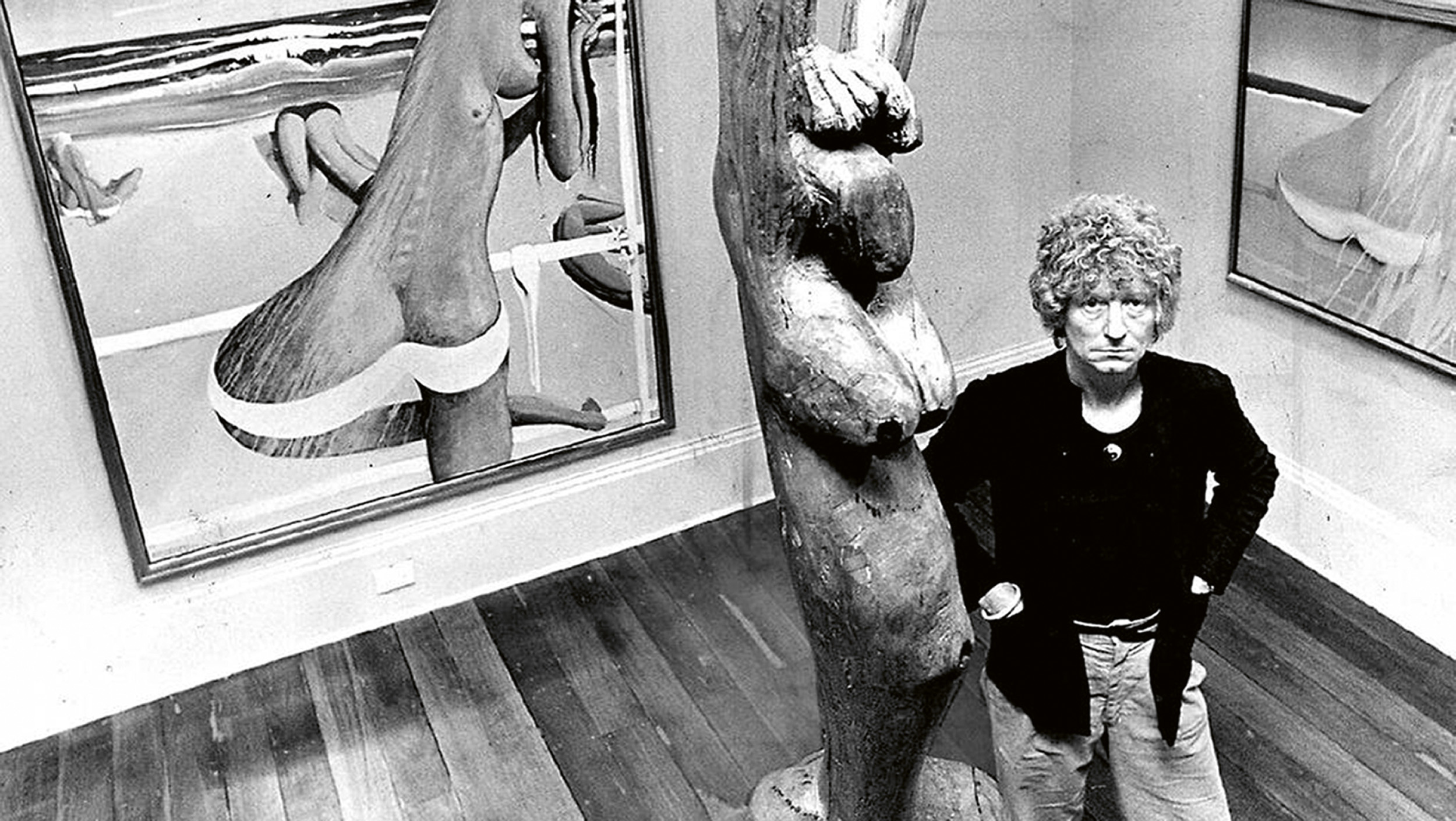
In the end however, aesthetics inevitably took precedence over topographical truth in his art, and as such, specifics about exactly where, when or how Whiteley’s genius found its expression no longer greatly matter. For with every brushed and ragging gesture he made, painting was never merely an act of description. Rather, it was the evocation of a dream, sometimes to travel elsewhere, through this, one of his most gently poetic elisions of land, sea and sky – a quiet masterpiece for the ages.
1. Whiteley’s Untitled Red Painting, 1960 was purchased by the Tate Gallery from the groundbreaking exhibition, ‘Recent Australian Painting’, held at Whitechapel Gallery, London from June – July 1961. Whiteley was only twenty-one years old at the time of painting the work and significantly, the Tate record still stands today.
2. Details related to Whiteley’s entire life and career are comprehensively covered in Ashleigh Wilson’s biography, Brett Whiteley: Art Life and the Other Thing, Text Publishing, Melbourne, 2016. For this particular context see pp. 351 – 416
3. Baudelaire, C., Intimate Journals, Methuen, London, 1949, translated from the French by Christopher Isherwood, with an introduction by W. H. Auden. Statement in Squibs XI, p. 8
4. Baudelaire, C., Le Bateau Ivre (The Drunken Boat), translated from the French by Oliver Bernard in Collected Poems of Arthur Rimbaud, Anvil Press, London, 1962.
5. Organ, M., Brett Whiteley and Thirroul…Life and Death, 5 September 2019, http://thirroulbrettwhiteley.blogspot.com/, accessed June 2023. This useful blog contains exhaustive detail about Whiteley’s relationship to Thirroul from the early 1970s, including circumstances leading to the artist’s death on 11 June 1992.
6. Sutherland, K., Brett Whiteley: Catalogue Raisonné, Schwartz City, Melbourne, 2020.
7. Whiteley in conversation with Andrew Olle in 1991, cited ibid., pp. 39, 43
8. Wilson, op. cit., p. 385
9. Whiteley cited ibid., p. 361
10. Organ, op. cit.
11. ibid.
BARRY PEARCE FUniSA
EMERITUS CURATOR OF AUSTRALIAN ART
ART GALLERY OF NEW SOUTH WALES
